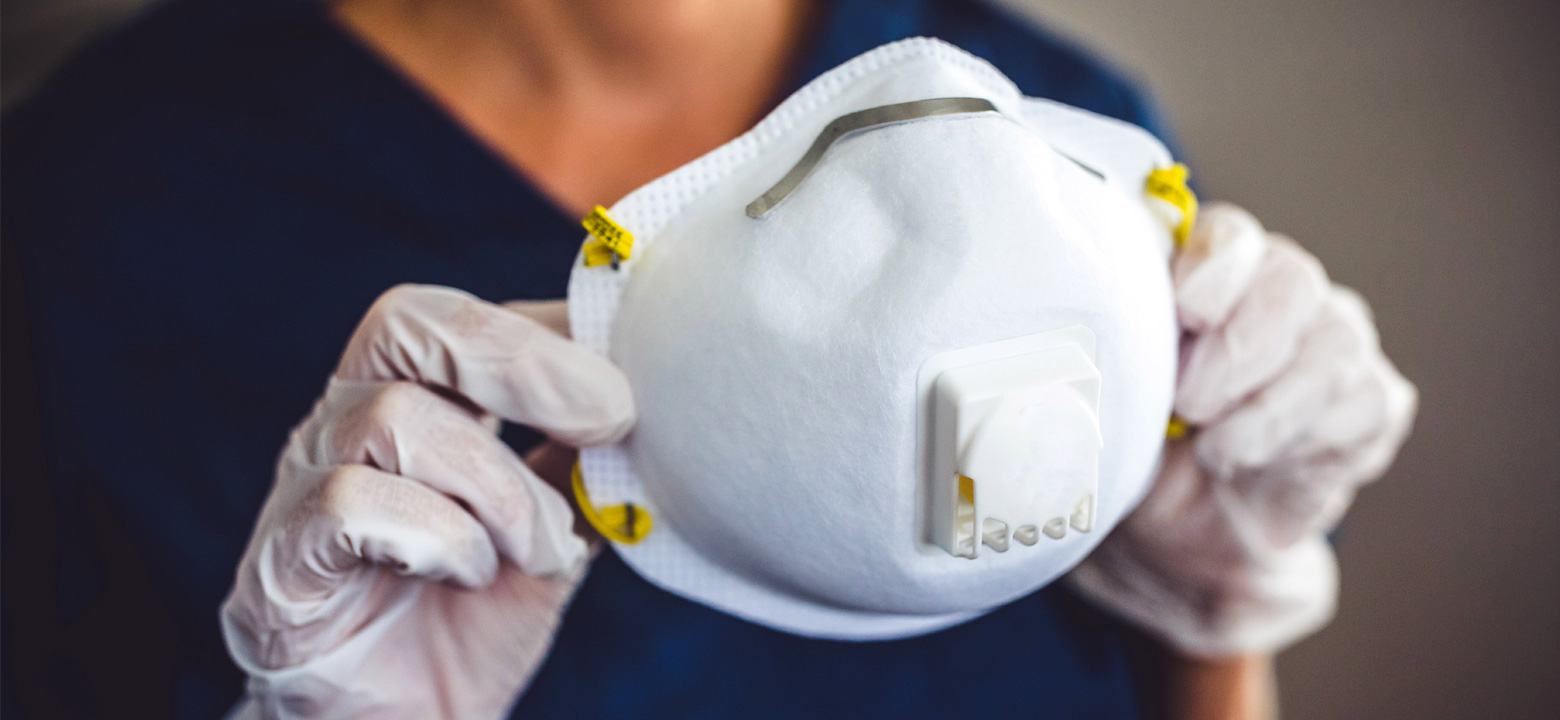
While N95 masks are the most effective for protecting the wearer from viral particles, their efficacy drops off after awhile. If the mask is wet—either from outside moisture or exhaled water vapor—they are no longer able to filter properly. After wearing them for awhile, the outside also becomes contaminated with pathogens. This is why it's generally a bad idea to reuse masks if it can be avoided, but, with shortages of effective personal protective equipment (PPE), that isn't always possible. Fortunately, new wireless sensors allow medical professionals to be certain that their masks are being effectively decontaminated before use.
The N in N95 stands for “non-oil,” meaning that these masks are appropriate for environments where coming in contact with oil is not a risk. The 95 means that they are capable of filtering 95% of airborne particles. It should be noted that N95 masks don't act like strainers—the gaps in the mask material isn't what traps particles. Instead, the masks rely on short-range electrostatic forces to attract particles and make them stick to the mask fibers. This is why decontaminating them is so challenging—not only do methods have to disinfect the masks, they have to preserve these electrostatic properties.
For most people, cloth masks are fine. They protect those around the wearer from exposure to the wearer's viral load, and provide some protection to the wearer. The average person isn't in a confined space with actively sick patients with a high viral load for hours at a time, so cloth masks are perfectly acceptable for everyday use. For healthcare workers in close contact with COVID-19 patients, N95 masks are crucial.
There are several methods in existence for cleaning N95 masks, but not all of them are readily available or appropriate. Some methods, like using ethanol, degrade the mask material. Others, like vaporized hydrogen peroxide, are difficult for some facilities to come by. However, most healthcare facilities do have one virtually indispensable piece of equipment: an autoclave machine.
An autoclave uses high temperatures and steam to kill pathogens. The operator locks the door, and all of the air within the autoclave is replaced with high-temperature steam. These machines need to achieve specific levels of temperature and humidity, because too little won't effectively sterilize, while too much can damage masks.
Many tools are marked with tape or packaging that changes color when the right temperature has been achieved for a sufficient period of time—if there's no color change, the tools aren't clean and the procedure needs to be repeated. These chemical indicators aren't always foolproof or perfectly accurate, though. Wired sensors are better, but cumbersome.
The University of Michigan, through a new National Science Foundation RAPID COVID-19 grant, recently developed a way to validate sterilization procedures for N95 masks. These batteryless, wireless sensors are less unwieldy and more accurate than traditional validation methods, and can more easily be used for N95 masks.
Instead of inaccurate chemical indicators or space-intensive coils of wire, these sensors rely on small chips. The chips can be placed within the machine, and monitored remotely. They allow for easy, accurate, continuous monitoring, and confirm when appropriate decontamination targets have been met.
Because of the way these chips work, they may also have broader applications outside of hospital settings. The “new normal” post-COVID means that more and more objects and surfaces need to be regularly decontaminated, and these sensors can provide an easy way to make sure that happens.
Ideally, healthcare workers wouldn't need to reuse N95 masks. With the mask shortage, this isn't the case. These sensors give healthcare workers a way to be confident that their PPE has been appropriately decontaminated, and is able to protect them and the patients they work with from airborne or droplet-based pathogens.